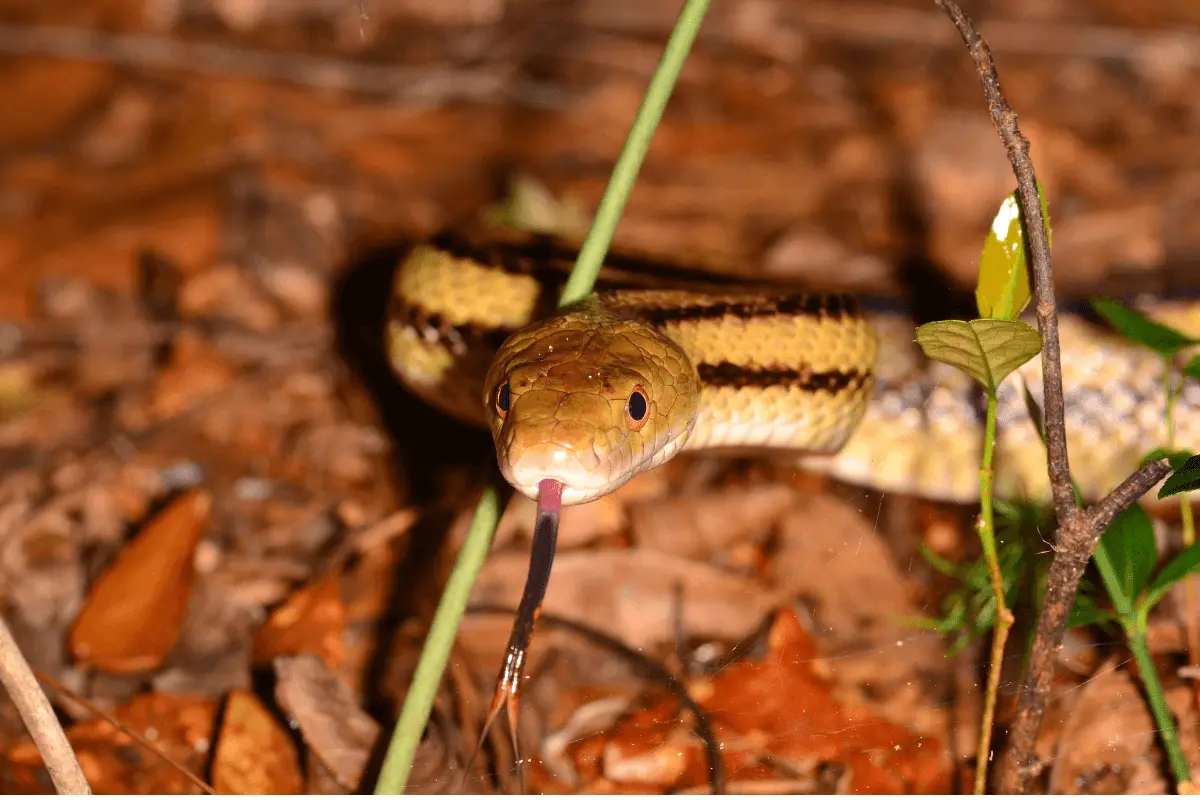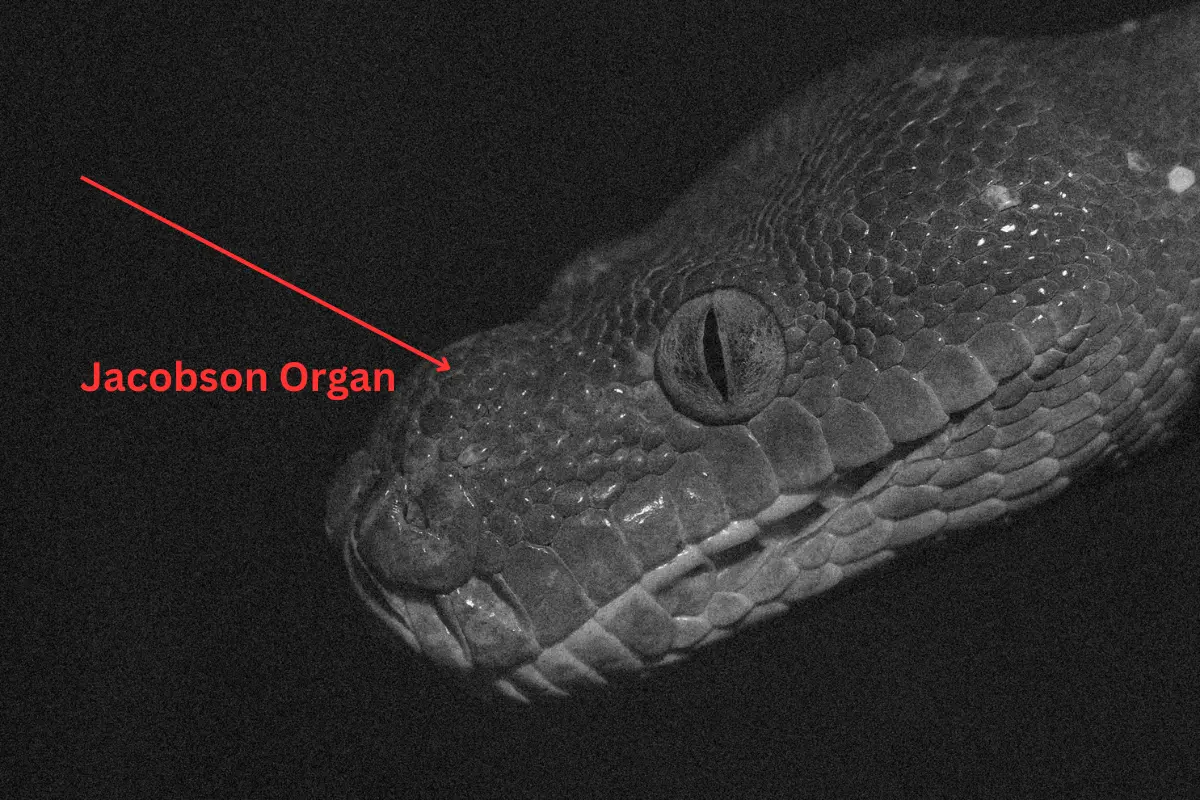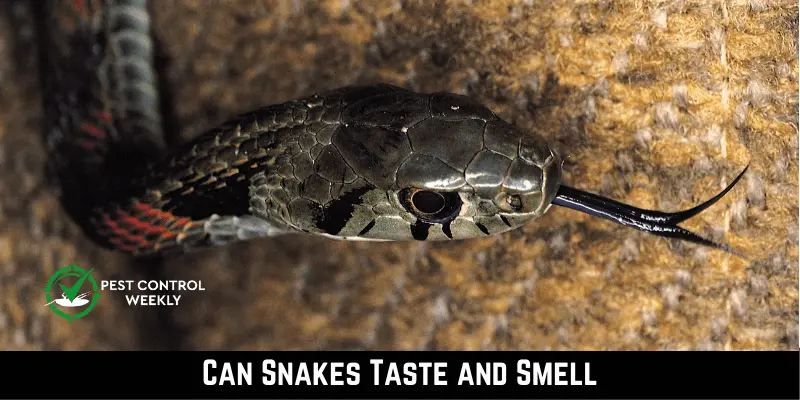Have you ever seen the long tongues and small nostrils of snakes? If so, you may notice that they have tiny nostrils and a long & thin tongue similar to you, but do they use them just like humans? Can snakes taste and smell?
Yes, snakes can taste and smell their food and other things, but their senses are not good enough like humans. They have limited taste buds, but they have specialized organs in the mouth to taste food. Although snakes have nostrils, they use Jacobson’s organs to smell things.
Do you want to know more about the senses of snakes? Read the below details to get a sneak into it.
How Does the Sense of Taste Work?
The sense of taste and smell both work together. The taste could be sweet, sour, salty, or bitter and to differentiate them, these senses work simultaneously. Humans have multiple taste buds to discriminate different tastes while snakes have specific organs in their mouth to do so.
As you chew food, several releasing chemicals reach the nostrils and trigger the sensory receptors inside the nose. In this way, the smell and taste senses combine to offer you the best flavor. Similarly, snakes have the same phenomenon of smell and taste as humans.
Features of a Snake Tongue
The snake tongue is different than humans. Below are the main characteristics of a snake tongue that help you differentiate it from yours.
Quick Features
- They have a forked tongue with a complex receptor system.
- Snakes hide their tongue inside the sheet in their lower jaw, therefore, you see a little part of it.
- According to the Journal of Microscopy AND Microanalysis, snake tongues display chemoreceptive adaptations in response to foraging behavior.
- During flicking, snakes pass their tongue through a notch-like structure rostral groove without opening the mouth.
- Moreover, snakes have Jacobson organs on their tongue to receive the sensation of smelling.
Does the Taste Work in the Same Way in Snakes As in Humans?
No, snakes have different types of tongue, so it doesn’t work the same way as humans. While humans have a lot of taste buds on their tongues, snakes haven’t. They have a specialized organ on their tongue, which receives the sensation of taste and sends it to the brain to process the information.
Furthermore, snakes don’t chew their food like humans. Instead, they flick their tongue in and out of their mouth to recognize their prey. Additionally, snakes have particular organs on the tip of their tongue to smell objects, while humans don’t smell with their tongues.
Does a Snake Have Taste Buds?
No, snakes don’t have taste buds. While some snakes may have a few taste buds on the roofs of their lips, the majority do not. It’s plausible to suppose that snakes experience taste considerably differently from humans due to the millions of senses we possess.
Furthermore, snakes have a different sense of taste than other animals. The Jacobson’s organ, a sensory structure, is located on the top of the mouth. This organ processes flavors and collects odors.
Why Does a Snake Flick Its Tongue?

Snakes flick their tongues to scrape substances out of the ground or air. According to the Integrative & Comparative Biology journal, snakes can modify their flicking mechanism according to their surroundings. On land, they flick their tongue with increased velocity and oscillations than in water.
While the majority of animals use their tongues for taste, cleaning, sound production, and prey manipulation, snakes use them very differently. As snakes chew the food, the Jacobson’s organ receives releasing substances from food and the tongue and transfers them to the brain for analysis. After processing the information, the brain aids in tasting food.
How Does a Snake Taste and Smell?
Snakes taste and smell their food with the help of Jacobson’s organ present on their tongues. Let’s have a look at this structure to understand the snakes’ taste and smell sensations.
What Is a Jacobson Organ?

Jacobson’s organ is also known as the Vomeronasal organ and is situated in the soft tissue of the nasal septum in snakes. This particular organ in the nasal cavity aids snakes and other reptiles & mammals in their sense of smell.
In snakes, this structure transfers chemicals from the tongue to the brain. Although it has a complicated network of neurons and sensors, this organ acts as the snake’s chief center for taste and smell. To taste the food, firstly, snakes flick their tongue in and out of their mouth to capture prey. After that, sensory receptors in Jacobson’s organ send signals to the brain to sense the taste and smell of food.
Does a Snake Love the Taste of Its Food?
Right now, it’s doubtful if snakes enjoy or detest the flavors of their food. Although snakes can taste odors in the air, it might be hard to tell if they can taste food once it is in their mouth. Additionally, though we’re unsure about their favorite food, snakes have preferences.
Some snakes prefer their food alive and kicking, while some like to play with their prey and nab it.
How Can You Tell If a Snake Is Hungry?
Even though they can go for months without eating, snakes nonetheless experience hunger. Snakes let you know that they are hungry by flicking their tongue in and out of their mouth frequently. Moreover, as they begin to roam their enclosure, the frequency and quantity of their tongue flicks will rise.
The snake’s hunger and thirst depend on its age, size, and activity. Therefore, you must know that larger, more adult snakes only consume food once per week or two, compared to smaller, younger snakes, which typically consume twice.
How Does a Snake Recognize Its Food?
Snakes use their sense of smell and touch to identify their food or prey. Firstly, they flicker their tongue to smell the food. After that, little particles adhere to their tongue when they lick the air and move to Jacobson’s organ. Now, this organ sends signals to the brain to identify whether the scent is predator or prey.
Moreover, snakes use their eyesight to recognize their food. Although snakes have a poor vision beyond 40 feet, they may easily see potential prey or food since closer objects are sharply focused. Furthermore, some snakes have specific pits below their nostrils to smell, identify, and hunt their prey in the dark.
Are There Food Preferences Among Snakes?
Yes, snakes have food preferences according to their species. Even though this may not directly relate to taste, it could still play a role. Snakes of the same species may have varying eating preferences.
If you keep more than two pet snakes, you may notice that; they enjoy eating different food items. Some may enjoy pinkies, while others may enjoy adult mice or rats. Moreover, snakes have preferences for various animal proteins, occasionally even displaying interest in meals that people eat.
If you want to taste your snake something new, try to rub the old food on it to trick your snake. In this way, snakes will surely consume new food items.
Why Doesn’t Your Snake Eat?
Although snakes eat their favorite food, sometimes they don’t show interest in tasting their favorite food due to the following reasons:
Stress
Snakes can be stressed like humans, but they have different reasons for tension. They can stress from improper handling and poor environmental situations. If you don’t handle or care for your pet snake properly, it may undergo depression and stress.
Moreover, snakes may become disturbed if the temperature is too high and there is not enough humidity in the habitat. And all these reasons prevent snakes from eating.
Illness
A sick snake may also be the cause of a change in their appetite. The symptoms of snake illness are different from humans. Common signs of snake illness are dull and floppy skin, hollow eyes, and general fatigue.
Below are some come health conditions that may affect the snake’s appetite.
- Rotting of mouth.
- Salmonellosis results in breathing issues, skin inflammation, and decrease hunger.
- Respiratory infections.
- Inclusion body disease caused by a viral infection in snakes.
- Parasitic infection.
- Metabolic bone disease due to poor nutrition or malnutrition.
- Wounds due to biting.
- Burns result in dehydration in snakes and ultimately reduce hunger.
Shedding of Skin
During the shedding period, some of the snakes stop eating. Many snakes stop feeding before shedding since it requires a lot of energy. That is most likely the shedding stage if your snake’s scales appear lighter than usual or if its eyes appear milky. Don’t worry! this is the normal stage in a snake’s life. You just need to leave your snake alone for a few days and let it recover.
Moreover, If your snake has a difficult shed, aid it by giving a shedding agent to speed up the process. Since shedding needs a lot of energy, snakes might spend days before one burrowed away to conserve energy.
Does a Snake Smell with Nostrils?
No, snakes don’t smell with their nostrils alone. Instead, they smell using their tongue, nostrils, and Jacobson’s organ together. Moreover, snakes don’t use their nostrils for chemosensing. Rather, they use their nostrils for breathing while keeping their mouth closed.
The only chemosensory organ is the forked tongue, not any other. Snakes gather the “smells” on the surface of the forked tongue when they flick it out into the air. As soon as the tongue is retracted, Jacobson’s organ recognizes these substances and alerts the brain, which sends signals back to detect smells.
Does a Snake Have a Good Sense of Smell?
Yes, snakes have a good sense of smell to compensate for poor eye health. Due to their poor vision, snakes typically only recognize basic shapes. However, they are extremely good at smelling and can identify other snakes.
The reason for the great sense of snakes’ smell is that they use their nostrils, tongue, and Jacobson’s organs together to sniff the object. On the other hand, humans smell with their nostrils only that’s why they have a weaker sense of smell than snakes.
How Many Senses Do Snakes Have?
Snakes have six senses; taste, smell, hearing, touch, and vision, and can detect the heat of other animals. However, these senses are not fully formed. They can’t see like us and can’t hear like we do. In contrast to humans, snakes can only distinguish between the two colors.
Snakes smell objects with the combination of nostrils, tongue, and Jacobson’s organ, while for the taste sensation, they use their small taste buds and vomeronasal organ. For vision, they use their eyes, but they are less functional than humans. Moreover, snakes have ears without any openings, so they don’t hear as well as humans.
Final Thoughts
Snakes are unusual reptiles with senses similar to humans but with different sense organs. Both the taste and smell sensation of the snake work simultaneously to distinguish the flavor and scent of their food.
Moreover, they possess specialized organs like Jacobson’s organ, which links the tongue with the brain to distinguish tastes and odors, allowing them to taste despite not having taste buds. Above all, every snake species has different senses, if you want to feed your pet snakes, you must know about their taste.
FAQs
References
Ahmed A El-Mansi and others, Structural and Functional Characterization of the Tongue and Digestive Tract of Psammophis sibilans (Squamata, Lamprophiidae): Adaptive Strategies for Foraging and Feeding Behaviors, Microscopy and Microanalysis, Volume 26, Issue 3, 1 June 2020, Pages 524–541.
William G Ryerson , Kurt Schwenk, The Kinematics and Functional Significance of Chemosensory Tongue-Flicking in Northern Water Snakes (Nerodia sipedon) on Land, in Water, and in between, Integrative and Comparative Biology, Volume 62, Issue 4, October 2022, Pages 852–864.
Zhong H, Shang S, Wu X, Chen J, Zhu W, Yan J, Li H, Zhang H. Genomic evidence of bitter taste in snakes and phylogenetic analysis of bitter taste receptor genes in reptiles. PeerJ. 2017 Aug 18;5:e3708.
